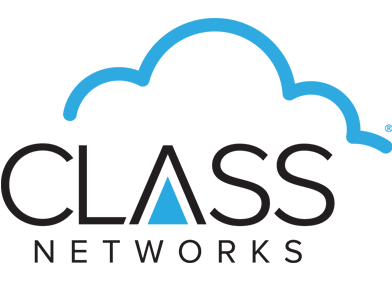Telephones were technological advances that made it possible to for businesses to communicate long distances instantaneously. Mobile telephones made this possible whilst on the move.
Over the past 24 months a global pandemic has spurred possibly the most monumental shift in the ways in which we work and communicate in recent history. Communal offices were replaced by home working spaces and coffee shops, in person meetings with conferencing technologies like Zoom and Microsoft Teams and on-site data storage with cloud based alternatives. So is your businesses information technology and communication system 2022 ready?
We can help to design, install and maintain your communications systems, from broadband and telephony systems to video conferencing software and cloud based services. Call us today on 0333 800 8822 to find out how Class Networks can help to bring your organisation up to speed.
How traditional communication has changed
Just like language, information and communication technology is constantly adapting and evolving. The pandemic accelerated this evolution exponentially, drastically changing the face of business operations and communications within a relatively short time frame.
‘…in April 2020, 46.6% of people in employment did some work from home’ according to Office for National Statistics, and their latest report stated that ‘…between 19 and 30 January 2022, 36% of working adults reported having worked from home at least once in the last seven days’.
With so many employees working remotely, or semi-remotely, it was essential for businesses to adopt new technologies that enabled clear communication, business continuity, data sharing, collaboration and customer relationship management.
Need help setting up your business for remote working? Click here to sign up to our FREE online business continuity and remote working workshop.
Key communication technology your business needs in 2022
Internal and external communications are of the utmost importance when it comes to the development and success of any organisation, and communication technology provides the basic platform for employees, clients and customers to effectively communicate.
Identifying the most suitable communication tools for your organisation can be an arduous task. Does your business need VoIP telephony systems or SIP trunking? Which conferencing platform will be best suited to your needs? To help you, we’ve put together this guide to what we believe are the key verbal and visual communication tools for your business in 2022.

Despite having been in existence since the 1970’s (operating on closed circuit LAN networks) email remains a crucial, and one of the most widely used tools for business communication more than 50 years later. Fast, cheap and accessible from anywhere with an internet connection, email is an efficient way to send all kinds of non-verbal communication and electronic information almost instantaneously, from written communication to file sharing.
Telephony systems
In order to identify the most suitable telephony system for your business you’ll need to understand the differences between them.
Traditional, on-premise telephony systems
You’ll no doubt be familiar with traditional, on-premise telephony platforms which are physically installed within a building. Examples of on premise telephony systems include:
- Private Branch Exchange (PBX): A private telephone network used within a business or organisation (Analogue)
- Public Switched Telephone Network (PSTN): A public telephone network operated on a local, regional and national scale (Analogue)
Because these systems do not require power, or an internet connection they are incredibly reliable, however they are restrictive in the sense that calls can only be made from a singular location, and they can be expensive to install and operate if the necessary infrastructure is not already in place.
On-premise VoIP (Voice over Internet Protocol) telephony systems
Like the traditional systems, on-premise VoIP telephony systems require the installation and ongoing maintenance of hardware within the business / work premises. They differ in that they operate by use of an internet connection to transmit data as opposed to the analogue form of PBX or PSTN systems.
They offer a wide range of functionalities including roaming and video conferencing capabilities, but are again hindered by the large investment required to install and maintain the system.
Hosted VoIP telephony systems

In our eyes the most suitable telephony system for business communication is hosted VoIP (or cloud based VoIP). Communications are managed by a third party from a remote data centre and so there is no requirement for hardware installation or maintenance.
Calls can be made using a VoIP telephone, headset, mobile device or desktop application from any location with an internet connection – ideal for businesses with remote or semi-remote working practices.
You only pay per user and they are easily scalable up and down as your business changes and adapts over the years.
Mobile solutions
Frontline workers, who by definition do not sit at desks or work from computers, make up a huge percentage of the overall workforce, and so for this sector of employment mobile phone communication is essential.
We provide and support mobile phone solutions to bring mobility to your workforce. Through SIM or WiFi, employees can be given network connectivity and access to business applications, whilst keeping you in control using secure device management software.
Video conferencing services
Whilst instant messaging, telephony and email services are all essential business communication tools, none are able to compete with the clarity achievable through face-to-face interaction. With fewer and fewer office based employees, and greater than ever location independent communication requirements, video conferencing services such as Microsoft Teams, Zoom and Skype have made this possible on a remote basis.
Cloud-native platforms
The most commonly used cloud-based platform is Software as a Service (SaaS). Typically subscription services, SaaS offers business users a huge range of benefits at a reasonable cost, with no requirement for hardware installation, maintenance or management. Services are managed by the host, delivered via the internet and accessible from anywhere, at anytime and include tools such as customer communication software which automates the creation, delivery and tracking of business and customer communications.
Microsoft 365 is an example of a subscription based service which makes it possible to chat, video conference, screen share and collaborate in real time – all within a single application. All services and programmes within 365 are interlinked enabling seamless integration and effective business continuity.
Transform your business communication in 2022
To find out how your business could benefit from our communications solutions call us today on 0333 800 8822, or complete our online contact form and we’ll be in touch.
Posted in News
